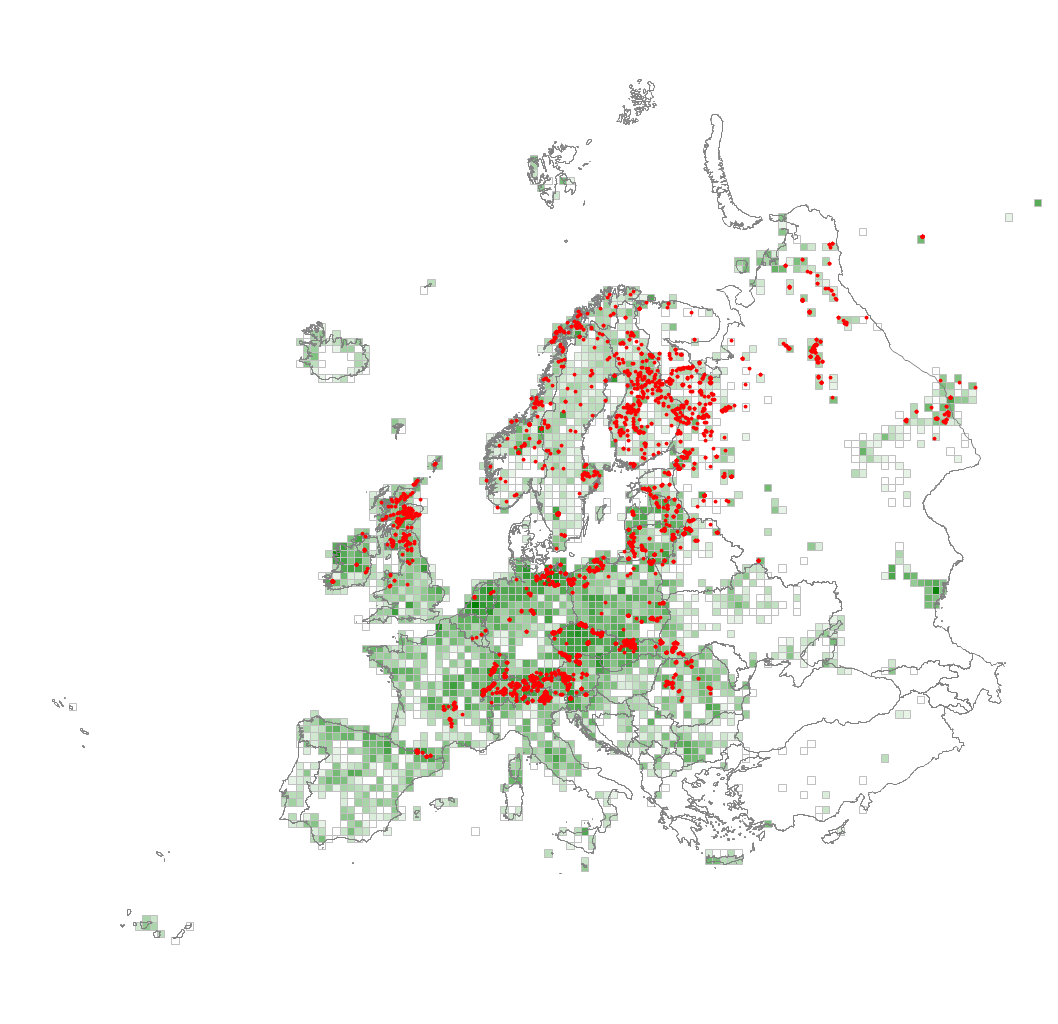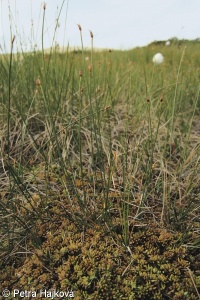Q11 Raised bog
The mire surface and underlying peat of highly oligotrophic, strongly acidic peatlands with a raised centre from which water drains towards the edges. The peat is composed mainly of sphagnum remains. Raised bogs form on nearly flat ground and are ombrotrophic, i.e. derive moisture and nutrients only from rainfall. Raised bog complexes include larger and smaller bog pools, lawns, elevated hummocks and their associated vegetation. Raised bogs form only in cool climates with high rainfall, and they are most widespread in the boreal zone and in the mountains and hills of the temperate zone; they also occur locally in the lowlands of the temperate zone. They are characteristic of lowlands and hills of North-Western and Northern Europe, the adjacent Hercynian ranges, the Jura, the Alps and the Carpathians. Bogs harbour, in addition to sphagna such as Sphagnum fuscum, S. magellanicum aggr. and S. majus, which are often abundant, a small number of dwarf shrubs such as Andromeda polifolia, Rhododendron tomentosum, Vaccinium oxycoccos, and sedges such as Carex magellanica, Carex pauciflora, Eriophorum vaginatum and Trichophorum cespitosum, non-sphagnaceous bryophytes and lichens.
Chytrý M., Tichý L., Hennekens S.M., Knollová I., Janssen J.A.M., Rodwell J.S. … Schaminée J.H.J. (2020) EUNIS Habitat Classification: expert system, characteristic species combinations and distribution maps of European habitats. Applied Vegetation Science 23: 648–675. https://doi.org/10.1111/avsc.12519
Version 2025-10-03, https://doi.org/10.5281/zenodo.16895007.
For the official presentation of the EUNIS Habitat Classification from the European Environment Agency, please see: EUNIS Terrestrial Habitat Classification 2021. The FloraVeg.EU presentation may show modifications and partial updates to the habitat classification.



1.jpg)
2.jpg)
3.jpg)
4.jpg)